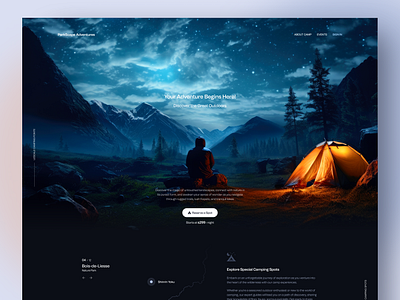Crucial Tips for Crafting High-Impact Web Site Layouts
In the world of electronic marketing, the style of a web site offers as a crucial touchpoint for involving possible customers. To develop high-impact website designs, one need to take into consideration essential aspects such as audience understanding, individual experience, and aesthetic power structure.
Understand Your Target Market
Recognizing your target market is fundamental to effective site style. A web site that reverberates with its site visitors is usually the outcome of comprehensive research study and understandings right into customer preferences, demographics, and habits. Identifying target users permits designers to tailor web content, visuals, and capabilities that fulfill their details needs, enhancing engagement and complete satisfaction.
To efficiently understand your audience, start by performing market analyses to gather information on age, sex, location, and interests. This info functions as a structure for producing user characters, which stand for the crucial qualities of your target audience. These characters overview decision-making in design components and material technique, guaranteeing alignment with customer expectations.
Additionally, analyzing individual behavior via tools like Google Analytics can reveal just how visitors connect with your site. Metrics such as bounce prices and time on web page can highlight areas that require improvement or change. Individual studies and comments additionally supply vital insights right into preferences and pain factors.
Eventually, a deep understanding of your audience is not just useful yet vital. It empowers designers to create more pertinent, appealing, and useful sites that cultivate a positive individual experience and drive wanted results.
Prioritize Customer Experience
When developing an internet site, prioritizing individual experience (UX) is extremely important to achieving both individual satisfaction and service purposes. A well-crafted UX guarantees that site visitors can browse the site effortlessly, locate the information they need, and involve with content effectively. To achieve this, it is critical to take on a user-centered style strategy that includes understanding individual requires, preferences, and actions.
Begin by carrying out extensive study, including customer surveys and usability testing, to collect understandings right into just how customers interact with your site. This data should inform style decisions, making sure that attributes and formats line up with individual assumptions. Structured navigation is crucial; site visitors need to have the ability to situate details promptly without unneeded clicks or complication.

Last but not least, ensure that your site is easily accessible to all customers, including those with impairments. Complying with access standards not only expands your target market yet additionally cultivates inclusivity. By prioritizing UX, you lay the foundation for a successful site that satisfies both customer requires and organization objectives.
Embrace Visual Power Structure
A well-structured aesthetic power structure plays a significant role in enhancing user experience by guiding visitors' attention to one of the most important elements of a website. read what he said By tactically setting up web content, designers can create a clear course for individuals to adhere to, ensuring click here to find out more they engage with important information properly.

Additionally, the positioning of components on the web page is crucial. Leading the viewer's stare via the format can be accomplished by positioning vital info at the leading or in the center, where individuals usually start their visual journey. Incorporating whitespace around elements can additionally boost quality, making it easier for customers to refine details without really feeling bewildered.
Last but not least, utilizing typography successfully adds to visual hierarchy. Various typeface weights, sizes, and styles can denote relevance, assisting individuals with the material seamlessly. By welcoming these concepts, designers can develop an instinctive experience that promotes engagement and encourages customers to discover additionally.
Optimize for Mobile
Mobile optimization is crucial in today's digital landscape, as a substantial section of web traffic originates from smart phones. To make certain a seamless customer experience, websites have to be developed with mobile customers in mind. This involves utilizing receptive website design techniques that adjust the format, images, and message to fit various screen dimensions while preserving capability and aesthetics.
First, focus on loading speed, as mobile customers typically operate on slower have a peek at these guys networks. Optimize pictures and decrease code to boost performance. Additionally, navigating ought to be instinctive; think about applying a simplified menu that permits very easy accessibility to important web pages without frustrating customers.
Touch targets, such as links and buttons, must be properly sized, guaranteeing they are quickly tappable without errors. Moreover, make sure that types are mobile-friendly by lessening input fields and utilizing dropdowns where appropriate, improving the user experience.
Lastly, examination your internet site throughout different mobile devices and internet browsers to recognize any type of problems that may influence use. By prioritizing mobile optimization, you not only boost individual fulfillment however also favorably affect your site's search engine position, thus bring in even more visitors and enhancing total involvement.
Implement Strong Branding
A well-defined brand name not only differentiates you from rivals however additionally fosters depend on and loyalty among your target market. This identification ought to be reflected consistently across all electronic touchpoints, including your internet site, social media, and e-mail communications.
Aesthetic components such as logos, color pattern, and typography play a vital function in branding. Pick a color scheme that reverberates with your target market and mirrors your brand personality. Ensure that your logo is versatile and plainly displayed on your website, boosting brand name recognition.
Content is similarly essential; your intonation must align with your brand identity, whether it's specialist, friendly, or authoritative. Engaging narration can additionally reinforce your brand, developing an emotional connection with customers.
Final Thought
In conclusion, crafting high-impact web site designs requires a multifaceted approach that incorporates understanding the audience, prioritizing individual experience, and welcoming aesthetic pecking order. By incorporating these elements, internet sites can successfully involve individuals, help with seamless navigating, and foster emotional links that improve brand identity.
To produce high-impact website layouts, one should consider necessary components such as target market understanding, user experience, and visual pecking order.When developing an internet site, focusing on customer experience (UX) is paramount to achieving both customer satisfaction and service goals.Start by performing extensive study, including individual surveys and functionality screening, to collect understandings into how users communicate with your website. To make sure a smooth user experience, web sites must be created with mobile users in mind.In final thought, crafting high-impact internet site designs demands a diverse approach that encompasses comprehending the target market, focusing on user experience, and welcoming aesthetic pecking order.